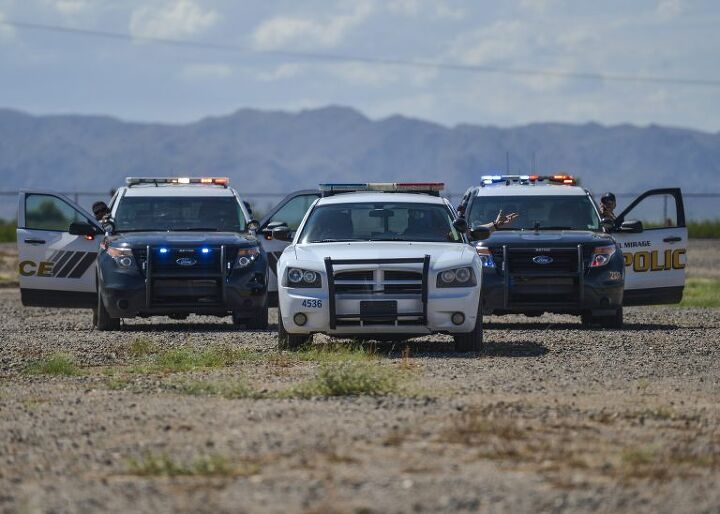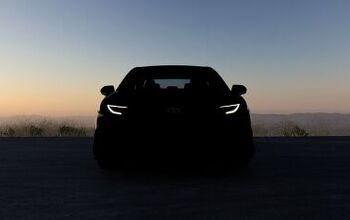How Dangerous Is America's Obsession With High Speed Car Chases?

Have you ever watched those police chase compilation videos and noticed that the crème de la crème always seem to take place within the United States? That’s not a coincidence. American roadways are custom built for high-speed shenanigans and culture has fetishized the concept of “the getaway.” Toss in local law enforcement agencies with vehicles fast and bulky enough to mix it up with speeding perps and you’ve got the perfect recipe for a old fashioned police chase.
That isn’t to say other countries don’t have pursuits, because they do. However, the volume isn’t always turned up to eleven and, more importantly, they typically aren’t televised. The opposite is true in the U.S. — especially in America’s car chase capital of Los Angeles, where crews are always at the ready to set out in the news chopper to get coverage.
It may be an unhealthy obsession. After all, we know the odds of the criminal getting away are infinitesimally small and are well aware of the incredible danger the public is placed in anytime a new chase kicks off. It’s one of the primary reasons we watch them: satisfying and legitimate drama is a guarantee.
However, The New Yorker released a video this week that suggested America’s obsession with car chases might be an unhealthy one.
Live police pursuits had a following long before OJ Simpson cruised down the Santa Monica Freeway in June 1994. But that event ultimately brought the phenomenon global attention. Around 95 million Americans watched the football icon slowly drive his white Ford Bronco in front of a mass of squad cars. Thanks to Juice, I can now expect to see live coverage anytime some Los Angelean decides to get involved with vehicular carnage — regardless of what part of the country I’m living in.
While it’s a great way to get your bloodsport fix, outlets have claimed police chases have resulted in thousands of deaths over the last few decades. According to The New Yorker, over 13,000 people have died as a result of police chases since 1979. Depending on who you ask, about half of that number represents innocent bystanders.
Where do we point the finger? Well, the above video seems to saddle the media with the largest share of the blame. But that’s not entirely fair, considering they aren’t the ones orchestrating these chases. We could fault the police, especially considering most of these incidents begin as minor traffic violations or misdemeanors before they spin out of control. But cops can’t automatically know that someone fleeing the scene hasn’t done more than simply run a stop sign and panic. Hitting the gas when being asked to pull over is fairly suspicious behavior, after all.
With over a third of all pursuits resulting in a crash, and most chases stemming from mundane crimes, something needs to be done. In March of 2015, 60-year-old federal employee Charlie Viverette was killed near Washington, D.C., by a driver police chased because his headlights were off. “The police shouldn’t have been chasing him. That was a big crowded street,” said Evelyn Viverette, the victim’s mother. “He wouldn’t have hit my son if the police hadn’t been chasing him.”
However, trying to evade the police is about as suspicious as behavior gets and, if the alternative is to simply not chase suspects, there would be little to no incentive to pull over. As pickles go, this one is a doozy.
Ideally, everyone would just exercise good judgement — suspects wouldn’t run when faced with a minor crime and officers wouldn’t give chase unless a fleeing suspect was a clear danger to the public. But that’s not entirely practical when both parties are making split decisions with limited information as their bodies pump themselves full of adrenaline.
So that just leaves us, the television audience. Does our watching these televised chases fan the flames of chaos? I’m not so sure. It’s doubtful that anyone sane leaves the house thinking they’ll get into a high-speed pursuit based entirely on how likely people will see them on TV. It might not even matter. Americans love a good police chase and a reminder of the inherent dangers isn’t likely to change that. That’s what made us want to watch in the first place.
“It’s a cultural phenomenon. We can’t take our eyes of this immoral behavior!” Dan Neil, an automotive columnist with the Wall Street Journal, tried to explain in an interview with the BBC. “We all know the outcome — he’s going to get caught. The odds are a million to one. And yet still, everyone gathers round the TV. We want to see the finale… the coup de grace.”
“It appeals to the American sense of rough justice,” Neil continued. “There’s a moment when everyone wants the bad guys to get their comeuppance.”

A staunch consumer advocate tracking industry trends and regulation. Before joining TTAC, Matt spent a decade working for marketing and research firms based in NYC. Clients included several of the world’s largest automakers, global tire brands, and aftermarket part suppliers. Dissatisfied with the corporate world and resentful of having to wear suits everyday, he pivoted to writing about cars. Since then, that man has become an ardent supporter of the right-to-repair movement, been interviewed on the auto industry by national radio broadcasts, driven more rental cars than anyone ever should, participated in amateur rallying events, and received the requisite minimum training as sanctioned by the SCCA. Handy with a wrench, Matt grew up surrounded by Detroit auto workers and managed to get a pizza delivery job before he was legally eligible. He later found himself driving box trucks through Manhattan, guaranteeing future sympathy for actual truckers. He continues to conduct research pertaining to the automotive sector as an independent contractor and has since moved back to his native Michigan, closer to where the cars are born. A contrarian, Matt claims to prefer understeer — stating that front and all-wheel drive vehicles cater best to his driving style.
More by Matt Posky
Latest Car Reviews
Read moreLatest Product Reviews
Read moreRecent Comments
- Kjhkjlhkjhkljh kljhjkhjklhkjh since most EVs are north of 70k specc'ed out + charger installation this is not news. You don't buy a new car every few years.This is simply saturation and terrible horrible third world country level grid infrastructure (thanks greedy exces like at the holiday farm fire where I live)
- MaintenanceCosts I think pretty much all of the difference between this year and last year is that the right-wing noise machine, facing an audience crisis, has decided that EVs, and wildly distorted claims about EVs and EV mandates, are a good way to to get gullible people angry and start replacing lost traffic.
- MaintenanceCosts I'd like to see a comparison between this and the base Model S, which should have similar performance numbers.I spent five days and 500 miles with a base 2022 Model S in Texas last week, and enjoyed it far more than my previous Model 3 drives - I think the Model S is a very good to excellent car, although "FSD" is a huge fail and I'd still have a lot of trouble giving Elon Musk money.
- DesertNative In hindsight, it's fascinating to see how much annual re-styling American cars received in the 1950's. Of course, that's before they had to direct their resources to other things like crash-worthiness, passenger safety, pollution controls, etc. It was a heady time for car designers, but the rest of us have benefited immeasurably from the subsequent changes.
- Cprescott Aside for how long it takes to charge golf carts since I don't live in a place where I can have my own charger, is the game that golf cart makers play when your battery fails and they blame you and charge you $15-25k to replace them.


































Comments
Join the conversation
Every car chase is better when it's covered by Stu Mundel - he's what every announcer should sound like - actively identifying streets or freeways, directions of travel, the next possible freeway interchange, the original want that prompted the ground units, who's pursuing (CHP, LAPD, LBPD, etc.) and occasionally adds his own commentary and personal observations.
Here in OKC I've seen an alarming number of very unnecessary police chases arising out of very minor offenses. Recently our local fuzz chased down some idiot who shoplifted like 20 bucks worth of snacks from a convenience store. The fools zipped at over 100mph through residential streets. They're damn lucky they didn't kill someone, especially a little kid. The police need greater accountability for acts such as this.